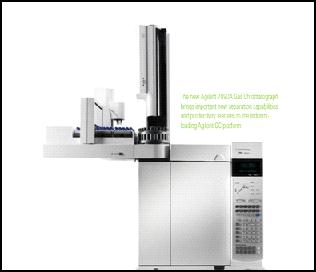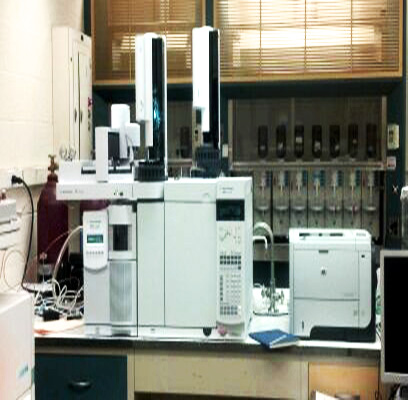Purpose
The SEMI-VOLATILE ORGANICS SECTION performs the analyses of pesticides, herbicides, semi-volatile organic compounds and polychlorinated biphenyls (PCBs) in drinking water, wastewater, groundwater, aquatic tissues, hazardous wastes, soils, sediments, sludges, leachates, and in consumer products for possible tampering or adulteration. Analysis of multi-media samples is carried out using capillary column gas chromatographs equipped with electron capture detectors (GC/ECD) or mass spectrometers (GC/MS), and high performance liquid chromatographs (HPLC) equipped with fluorescence detectors.
Instrumentation
Analysis of multi-media samples is carried out using capillary column gas chromatographs equipped with mass spectrometer detector (GC/MS) and Electron Capture detector (GC/ECD) A typical GC/ECD & GC/MS is shown below: Most methods involves a lengthy extraction process to derivatize the sample to a thermally stable volatile form before the analyses by GC.
- Agilent GC/ECD
- Agilent GC/MS
- HPLC
Gas Chromatograph – Electron Capture Detector (GC/ECD) 
The ECD or electron capture detector measures electron-absorbing components (usually halogenated) by creating an electrical field in which molecules exiting the GC column can be detected by the drop in current in the field. The ECD uses a radioactive beta particle (electron) emitter in conjunction with a makeup gas flowing through the detector chamber.
Gas Chromatograph – Mass Spectrometer (GC/MS)
Gas chromatography–mass spectrometry (GC-MS) is a method that combines two techniques to form a single method of analyzing samples. Gas-chromatography separates the elements of a sample and the mass-spectrometry characterizes each element making it possible to qualitatively and quantitatively analyze samples. The GC-MS is a system tailored to meet the rigorous demands for scientist in both routine analysis and research.
Elements Routinely Analyzed
The laboratory analyzes pesticides, herbicides, haloacetic acids, PCBs, semi-volatile organic compounds in drinking water by various EPA. Pesticides, PCBs and semi-volatiles in wastewater, soil, hazardous waste, sediments, and sludge are analyzed by EPA method 8270 in support of State and federal environmental regulations.
*Pending EPA Provisional Certifications
** Glass vials must have Teflon-lined septum caps; glass bottles must have Teflon-lined caps
NA = not applicable
Potential Health Concerns and Environmental Effects
SVOCs include a variety of chemicals, which can have short or long term adverse health effects which can range from being highly toxic to having no known health effects. Some are suspected to be cancer causing in humans and some are known to be carcinogenic in animals and humans.

